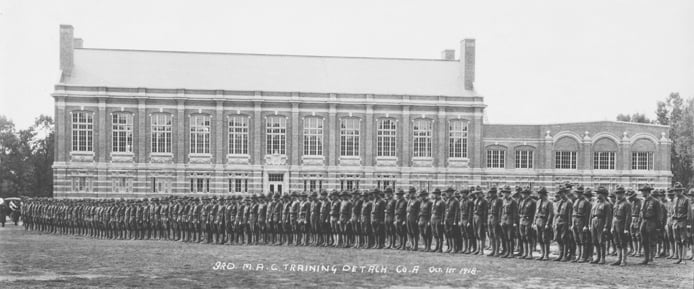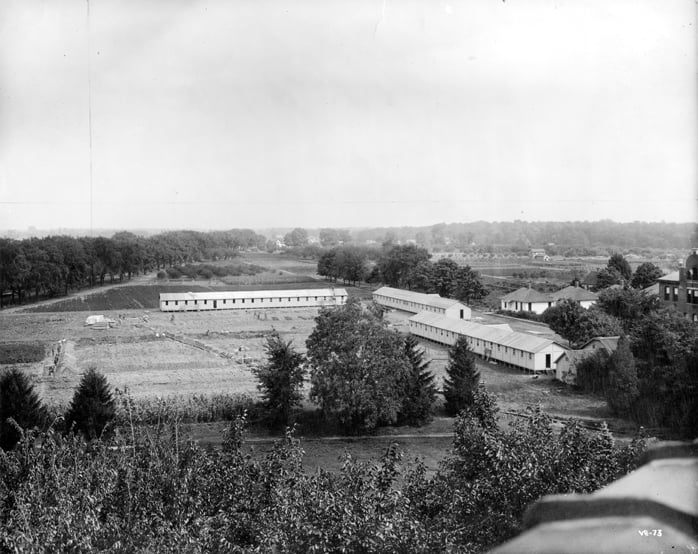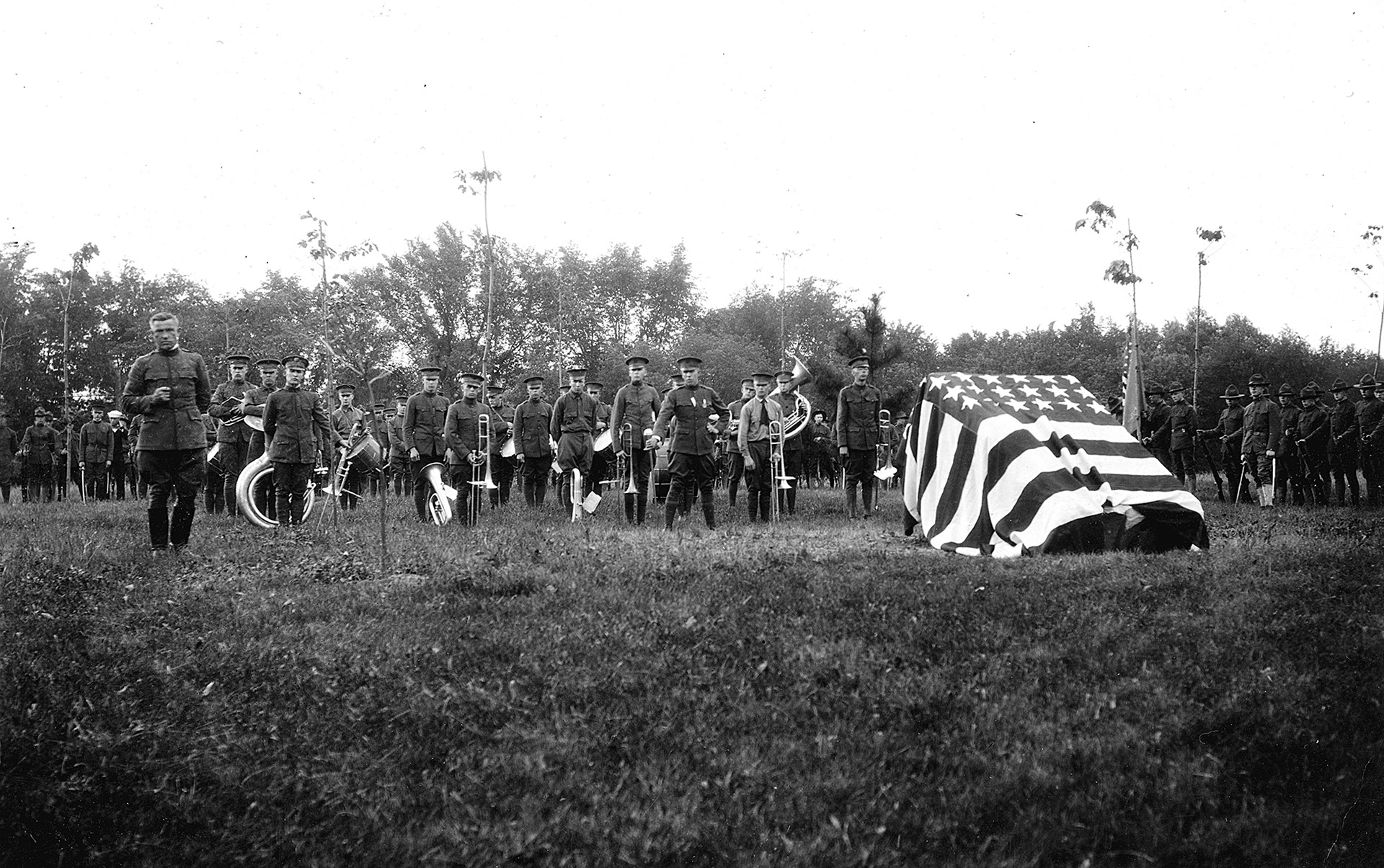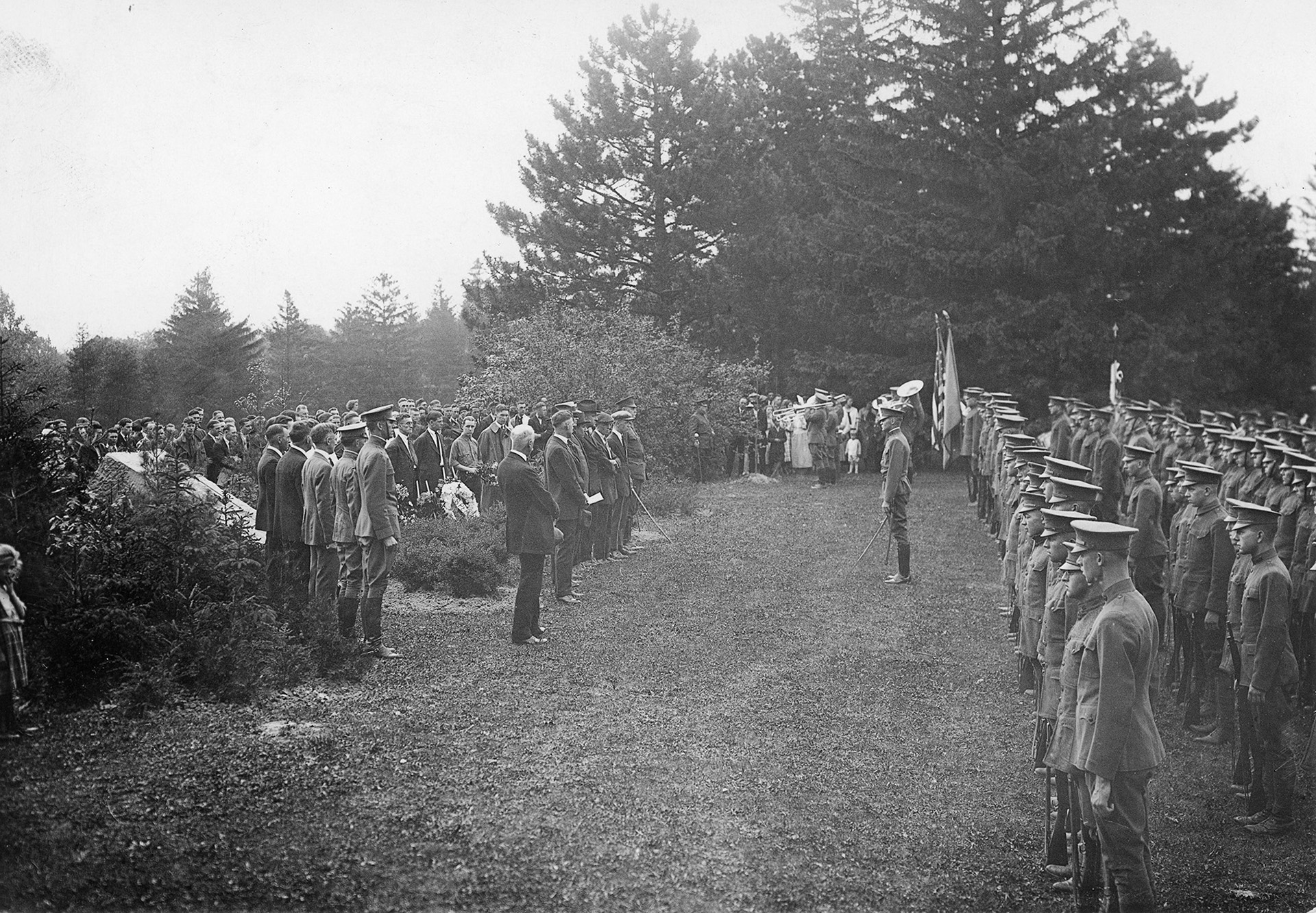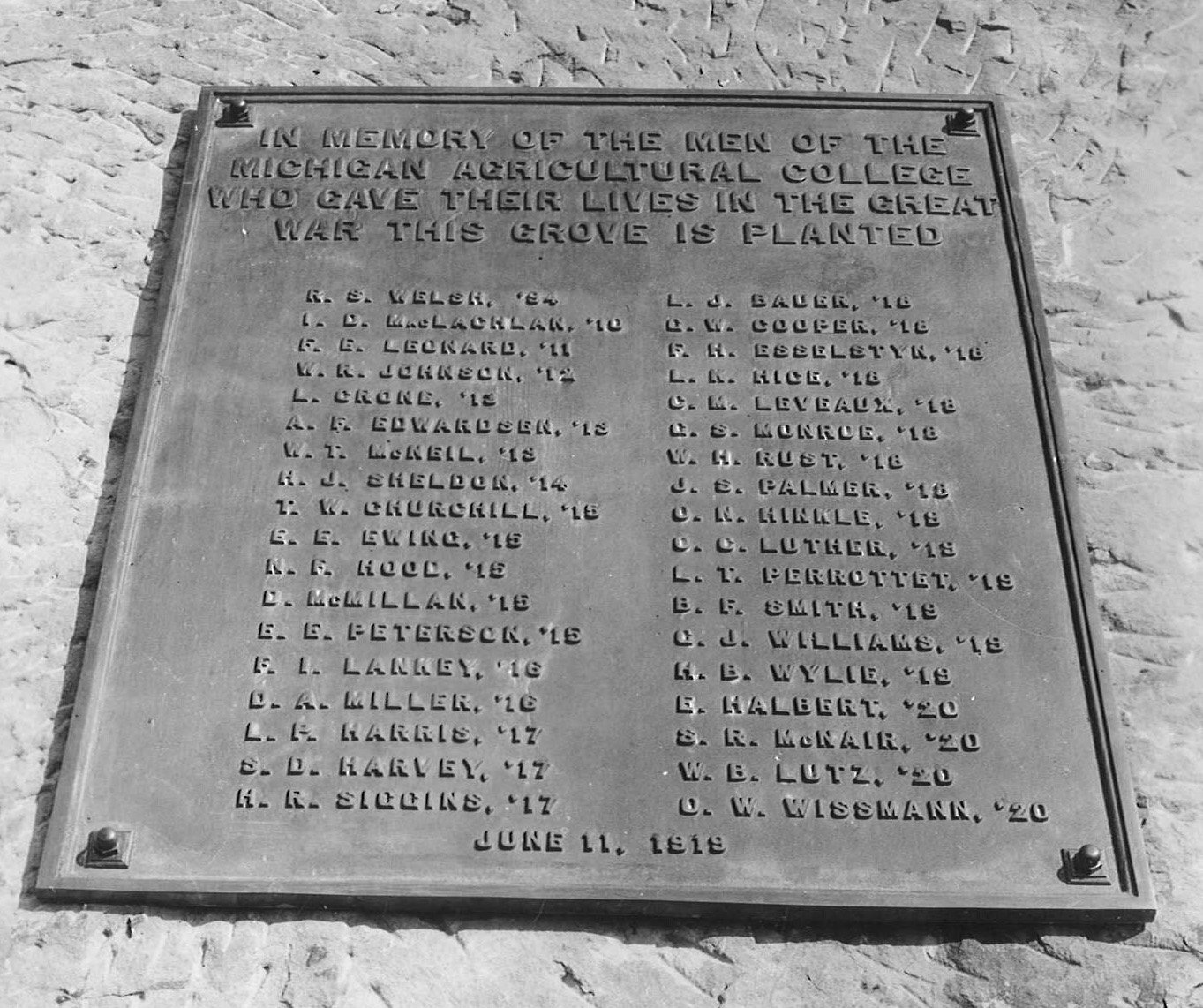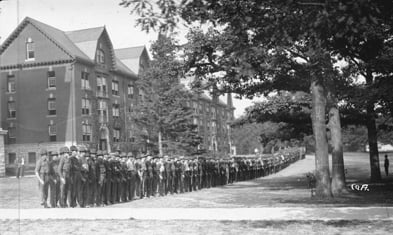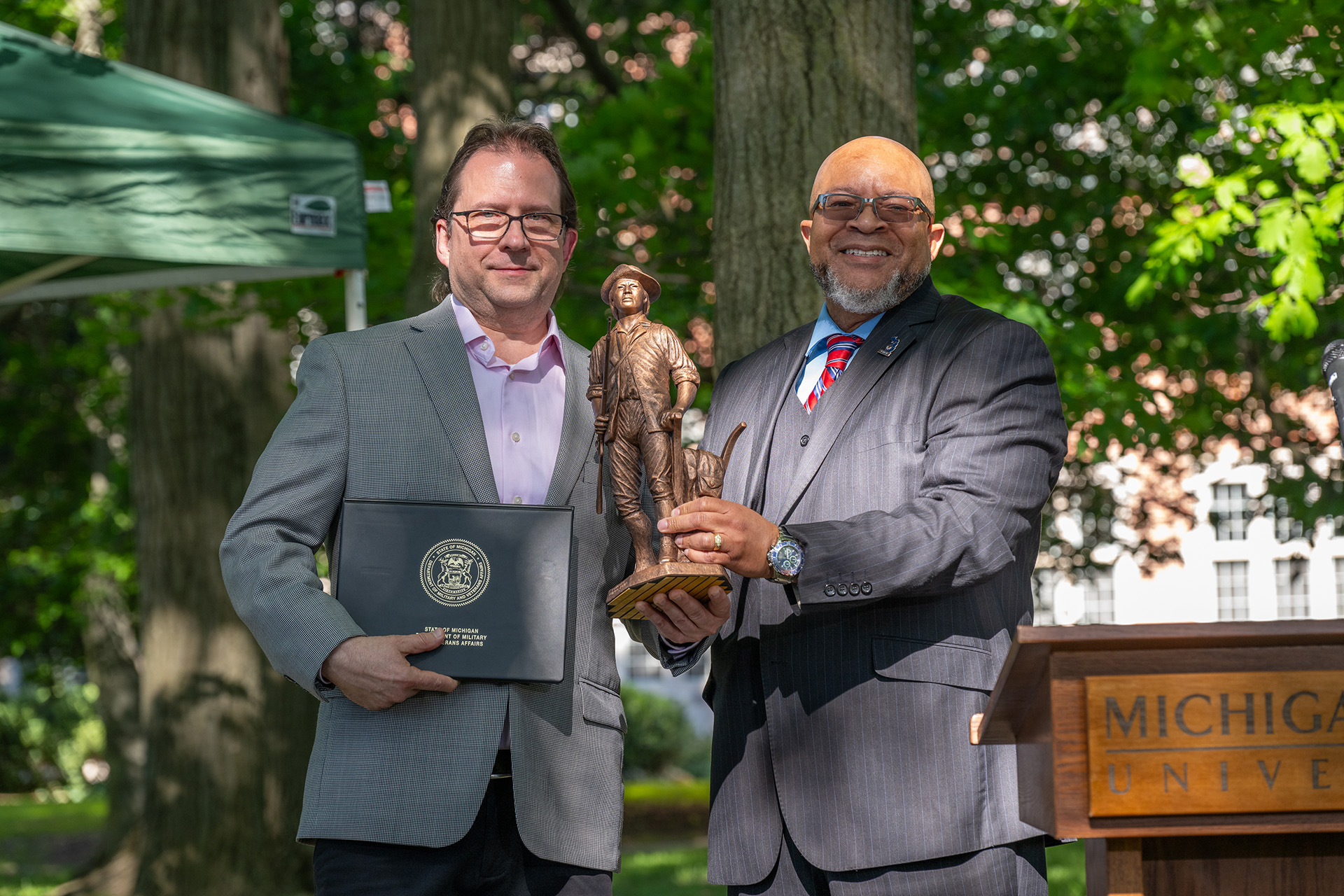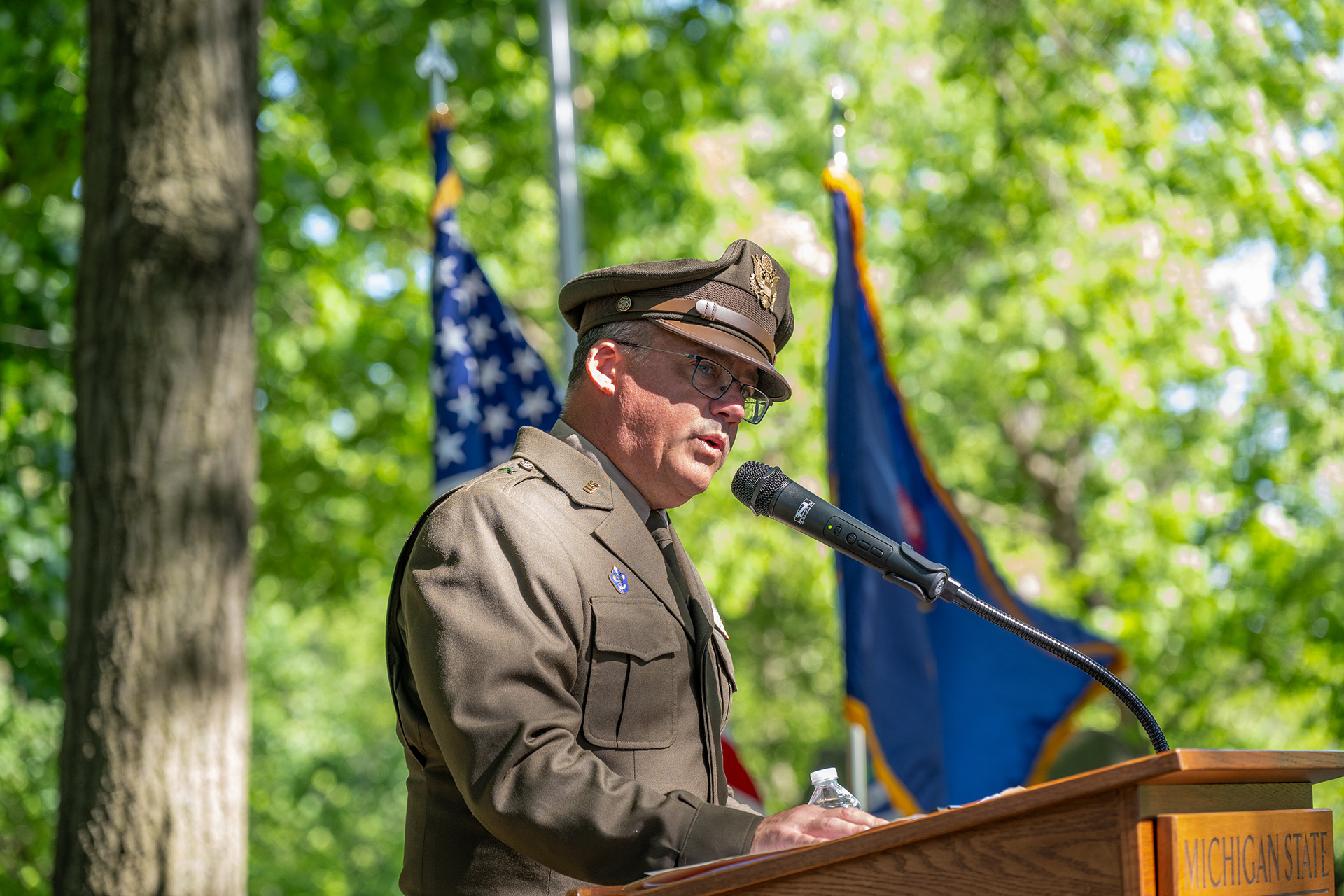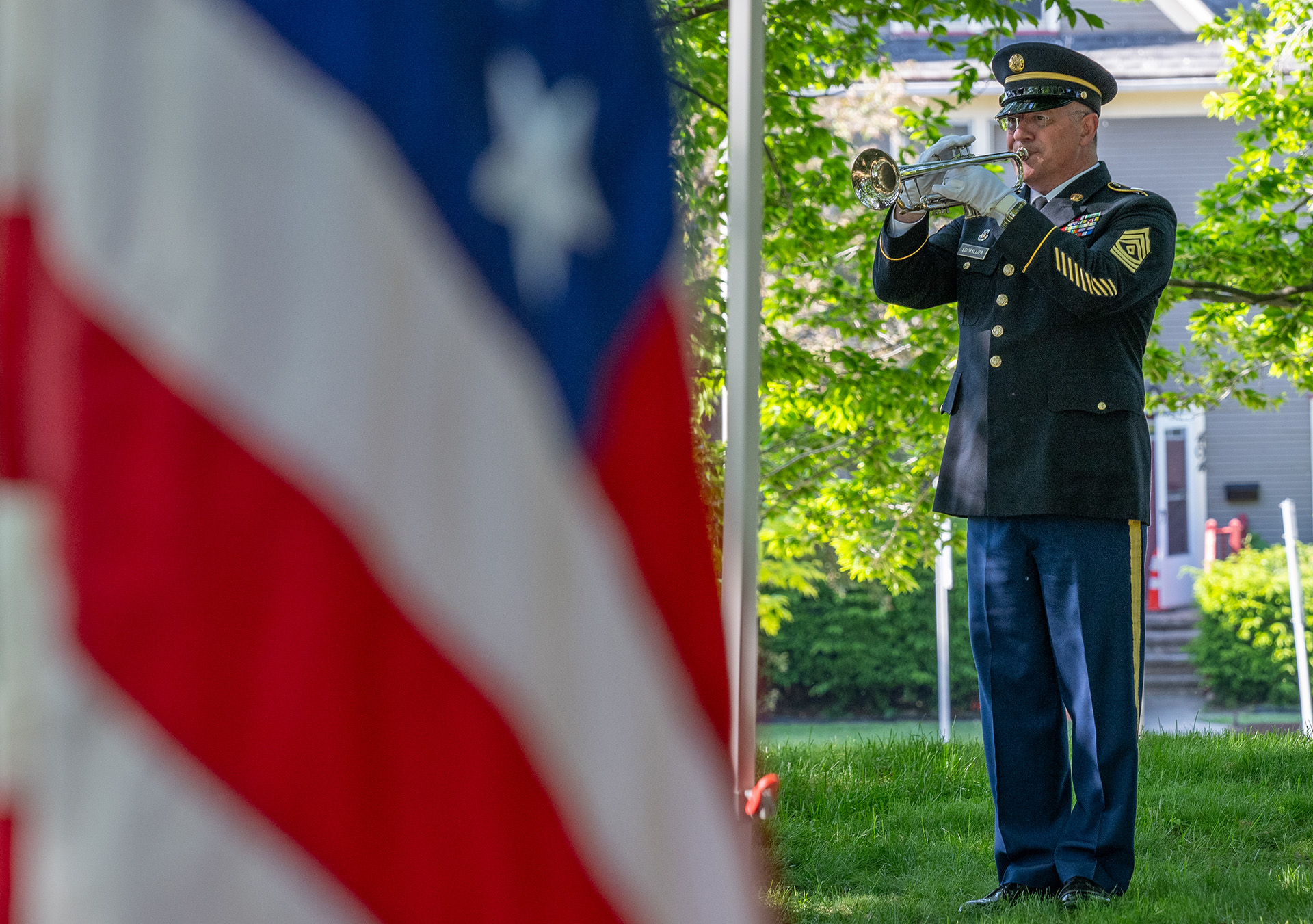Extensive updates were unveiled to a 105-year-old campus memorial honoring students and alumni who fought and died in World War I.
On May 23, 2024, leaders from across Michigan State University and the state of Michigan gathered just west of Williams Hall in the shadow of a towering grove of oak trees to rededicate a campus memorial with a nearly 105-year-old story.
Organized by the Student Veterans Resource Center, or SVRC, in partnership with the Department of Forestry, Infrastructure Planning and Facilities, the Army ROTC program, the Michigan Veterans Affairs Agency and the Michigan National Guard, the rededication ceremony celebrated expansive updates and enhancements to the Memorial Grove of the Great War.
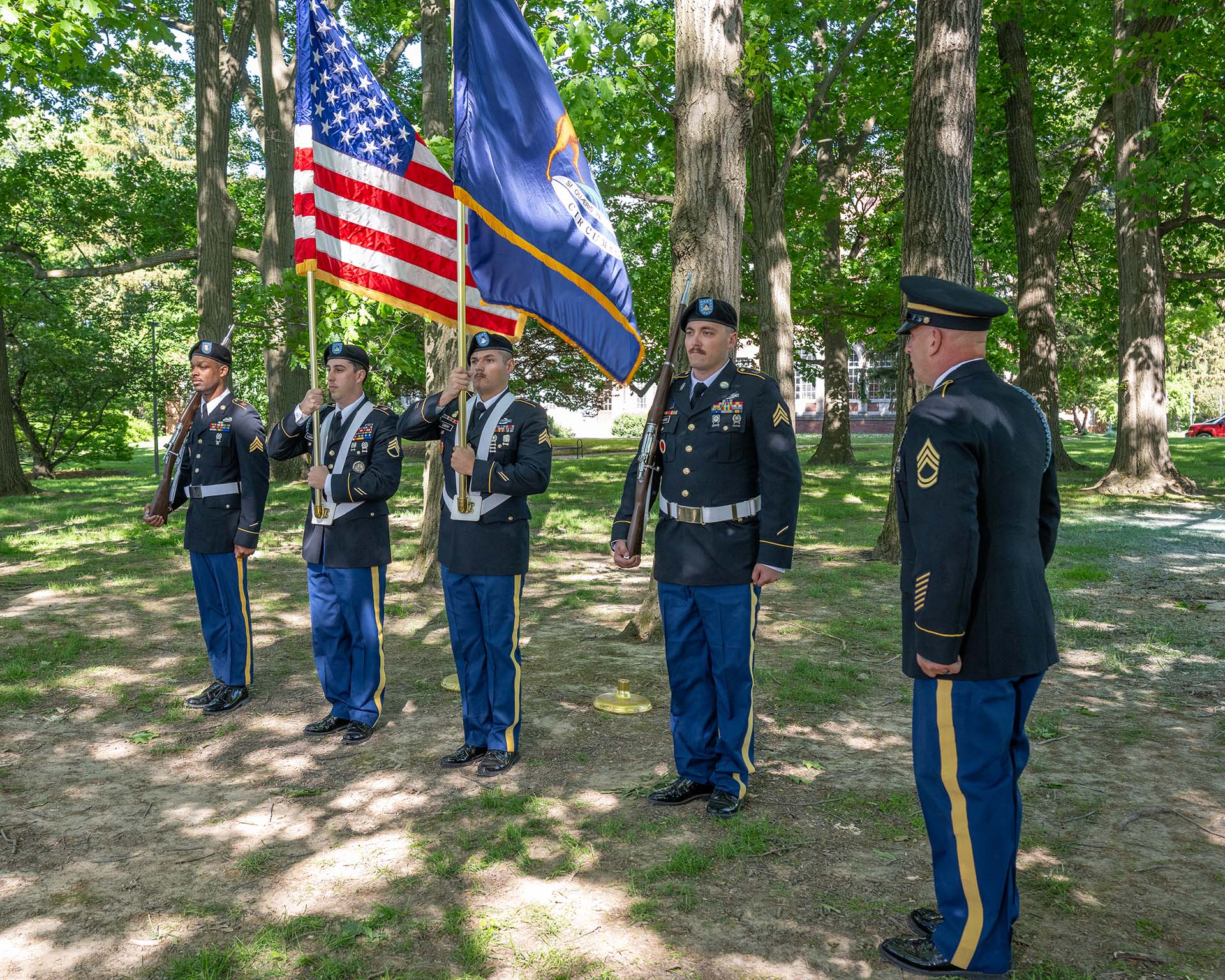
Originally dedicated on June 19, 1919, the Memorial Grove of the Great War was built in honor of the 33 students and alumni of Michigan Agricultural College, or M.A.C., (now Michigan State University) who died while fighting in World War I. The memorial was marked by a brass plaque engraved with each soldier’s name adorned to a field stone beside a grove of 33 oak trees to commemorate each soldier’s sacrifice.
More than a century later, funding from the SVRC, Infrastructure Planning and Facilities and generous private donations from the MSU community is revitalizing this memorial. When fully complete, these updates will include the addition of a dedicated patio and flagpole area, a courtyard space and brick path leading up to the memorial, landscaping improvements, historical signage detailing the history of the memorial and the fallen soldiers as well as two benches flanking the field stone to provide an area for quiet reflection.
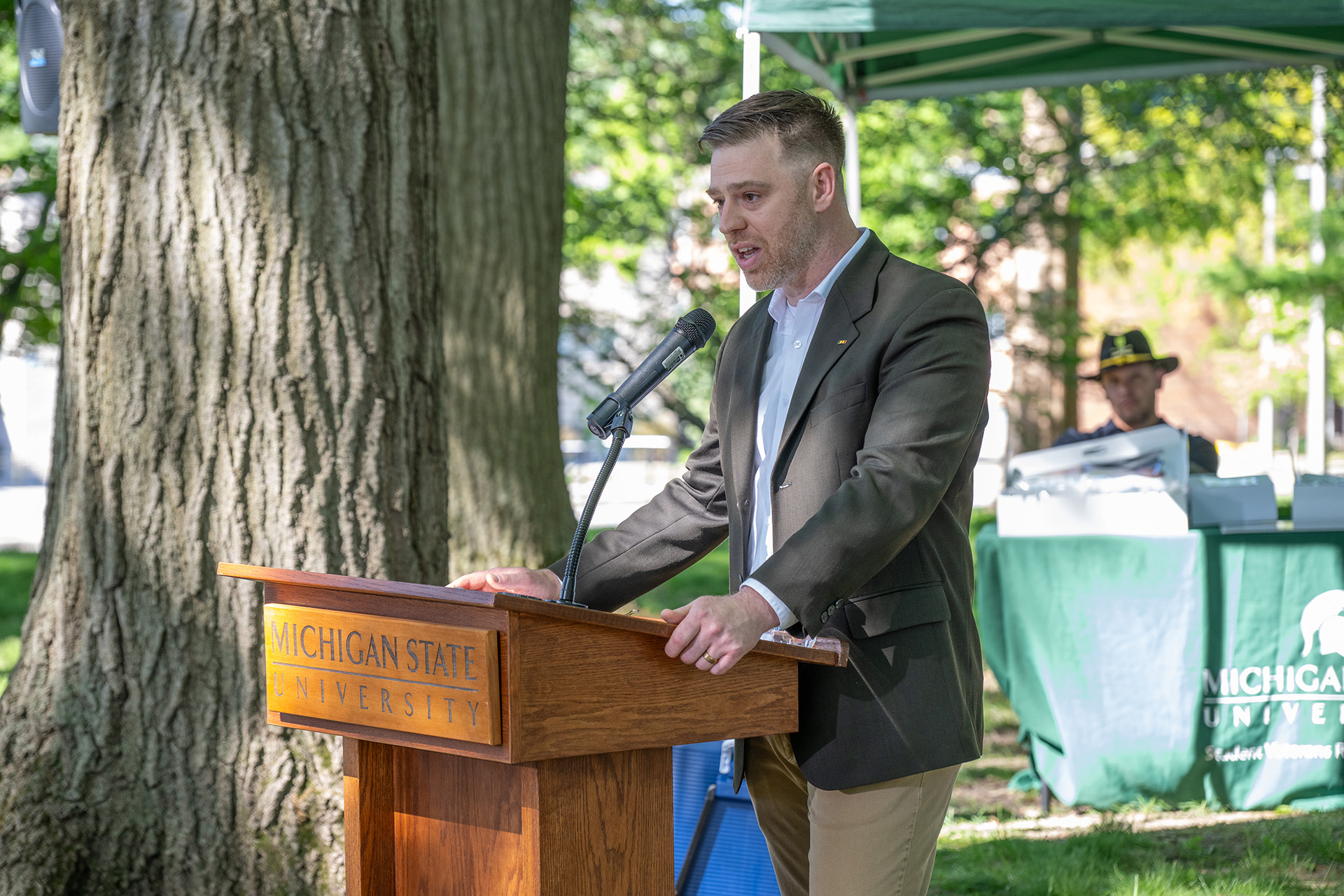
“That’s why we’re here to today,” said SVRC Director Patrick Forystek, “to remember the 33 students and alumni represented on this memorial who gave their lives over 100 years ago. We’re here to keep the memory of them and their sacrifices alive. We’re here to do what we can to make sure their names are not forgotten. In that way, they are never truly gone.”
The rededication ceremony included the Posting of the Colors presented by the First Battalion, 125th Infantry, as well as remarks from Michigan National Guard Brigadier General, and MSU alumnus, Jeffrey Terrill (’91, Business) and Michigan Veterans Affairs Agency Director Brian Love.
“The struggles and battles endured by so many Americans of generations past have stitched valor, leadership and wisdom into the fabric of American society, fostering a safer and more inclusive world for all,” said Brig. Gen Terrill. “Let the Michigan Agricultural College’s Grove of the Great War Memorial stand as a renewed symbol of remembrance, reflection and renewal for future generations.”
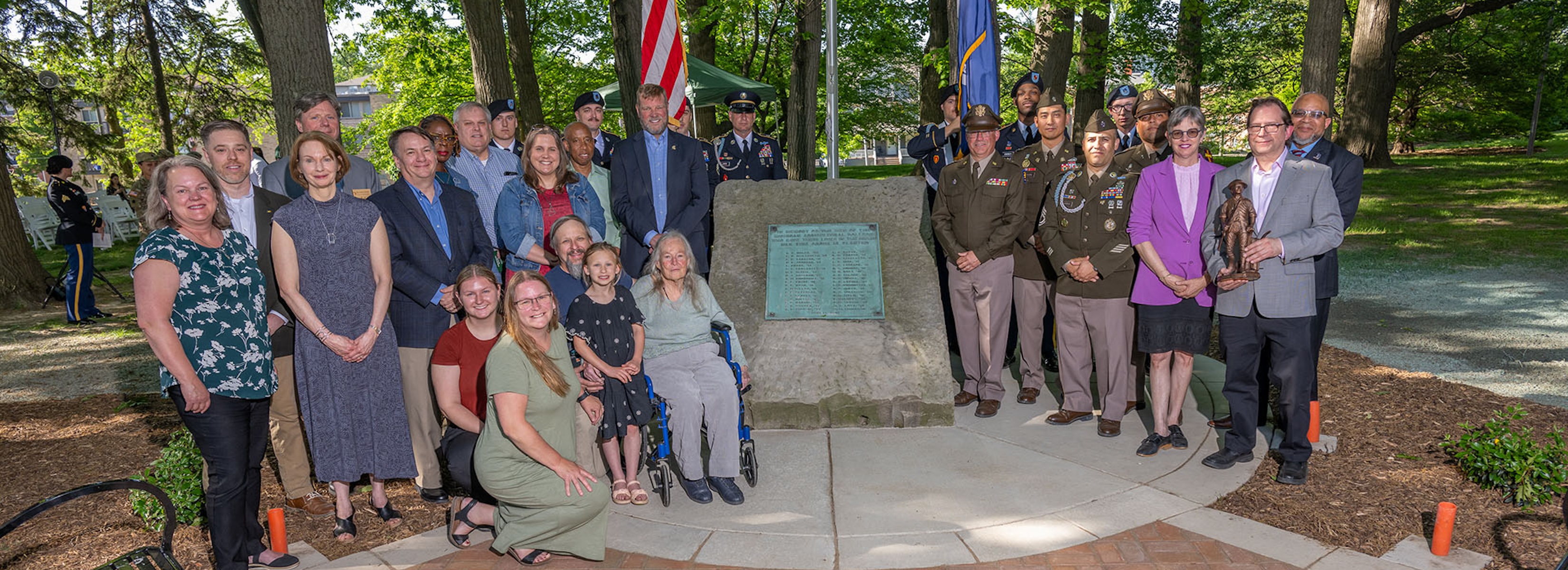
Leaders from across MSU and dignitaries from the state of Michigan gathered around the Grove of the Great War Memorial plaque with descendants of U.S. Army Corporal William B. Lutz, M.A.C. class of 1920, who was killed in action near Chery, Marne, France in 1918. Photo by Derrick L. Turner
“M.A.C. will do its part”
World War I began in 1914 and brought about an unprecedented level of suffering and carnage. There were an estimated 40 million military and civilian casualties as a result of the fighting and widespread destruction. The armistice agreement signed on Nov. 11, 1918, finally brought about an end to the hostilities after more than four years of war.
The U.S. joined the war in 1917, with over 4 million soldiers deployed to fight overseas. America’s mobilization played a pivotal role in turning the tide of the war in favor of the Allies and bringing an end to the conflict. This crucial contribution came with a heavy cost. Ultimately, 116,516 American soldiers died in World War I, with another 204,000 wounded.
America’s entry into the war impacted all corners of life at M.A.C., affecting social activities, class schedules, sporting events, student enrollment and the campus landscape itself. “No one knows exactly what confronts us as a nation,” said M.A.C. President Frank Kedzie at an Alumni Association gathering in 1917, “but I know and feel that the M.A.C. will do its part in the future as it has done in the past.”
Commencement ceremonies were rescheduled while planning for a large M.A.C. anniversary event was halted. The 1917 semester start date was postponed, allowing students to assist during the harvest season on family farms to support the Army’s food supply needs. The Student Army Training Corps, or S.A.T.C., was established, leading to regular military training exercises on campus. Buildings were repurposed, with several dormitories converted into military barracks for soldiers temporarily on campus.
